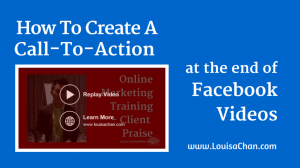What This Post Is
This post is an overview of some helpful tips and tricks to help you write blog posts that attract and resonate. Granted, not all of these tips are suitable for every single blog post you publish, and using these techniques absent actual interesting content will never produce the results you want to see. But if you incorporate one or two of these techniques into your writing and you will see a difference.
What This Post Isn’t
These tips will help you shape your writing and present your thoughts in the best way possible, but a comprehensive inbound blog content strategy this is not. Moreover, this is not a guide on maximizing SEO keyword rankings in your posts or creating a perfect long-tail title to drive search engine traffic – both things that you should be doing.
Enjoy.
_____________________
“A compelling and relevant quote by someone recognizable can help you capture the attention of your audience right from the start. (Plus it never hurts to ride in on the coattails of someone else’s wisdom.)”
Matt Courchene-Roy
Gentleman, Scholar, Marketer
The point of your first paragraph is to draw your reader in and capture their attention. But while some narrative exposition is good, the worst thing you can do is scare your readers away with a long, meandering story that doesn’t get to the point quickly enough. In fact, keep all of the paragraphs relatively short. Not only are people are busy, shorter paragraphs can help you offset or highlight certain thoughts.
For example, I might want you to pay attention to this sentence in particular.
If your blog posts are geared towards businesses and their employees, then your audience is even busier. You have two or three minutes to get your point across, so make it count.
Also, it’s important to remember that readers typically only look at the first three and last three words of the post title so focus on the start and the end. If the title doesn’t suggest that highly valuable information will be found inside, rewrite it. Then rewrite it again, and make it even better.
SubHeadings are Useful for Educational Posts
Even if you’re only tackling a single topic, you’ll probably have natural transition points along the way, as you move from one supporting idea to another. Subheadings can help you give those who skim posts for relevance first a roadmap for what they will get out of your content.
Adding a click-to-tweet option is a great way to allow people to interact with your post and share your ideas.
So what else can you do to better organize your thoughts? You can bold certain words and phrases to help them stand out. But don’t overdo it; if you bold everything, nothing will stand out.
- Bulleted (or numbered) lists help change the pace and give the eye a place to land.
- Keep the lists short and keep each point sentence length.
- Two bullet points is too few and three or four is just right.
- End with a period. Or don’t, but be consistent.
Name dropping is a legitimate technique to make your blog post more interesting. It shows that you are aware of the world outside of your own bubble. For example, you should check out marketing guru Seth Godin’s blog for good examples of short paragraphs, short posts, and good titling.
(Many of Godin’s paragraphs are only one sentence long!)
What Else Should You Do?
Don’t be afraid to inject your personality into your post. You don’t need to be a comedian to keep a reader’s attention. Be yourself and have some fun and then show people that you had fun writing the post. You don’t want your blog post to sound like anyone could have written it, right?

Use an image to break your content into smaller pieces. A shorter post is usually going to be more engaging than a longer post, but a long post with strategically placed pictures can work just as well as a shorter post.
In addition, if you’ve published other blogs on similar topics, mention them. For example, in the past we’ve talked about what content habits you need to break this year, why great content takes time and how to write a business blog that actually gets read. You’ll demonstrate your brand’s history of thought leadership on a particular subject, while also keeping people on your website.
Give Them Something to Do
This is very important. Your readers should come away from a blog post with the ability to take action or do something differently than they were before. Maybe now you’ll give images or subheadings a whirl in your next blog? Or you might want to learn more about how to create mind blowing content.
Final Thought
Finally, finish off strong with a conclusion that ties everything together. But don’t just run through a list of the ideas you presented in your post. Instead, ask yourself this question: “If there is one thing my readers should remember from this post, what should it be and why?” This will help you craft an ending that underscores the value of your argument(s) by placing them within the context of a more “bigger picture” theme.
P.S. Don’t forget to include a relevant content offer at the end to what you wrote about. Because your blog post may get someone through the proverbial door on your website, but including an offer that directly correlates to what you were writing about is how you’re going to convert visitors into leads.
Digital & Social Articles on Business 2 Community
(57)
Report Post







